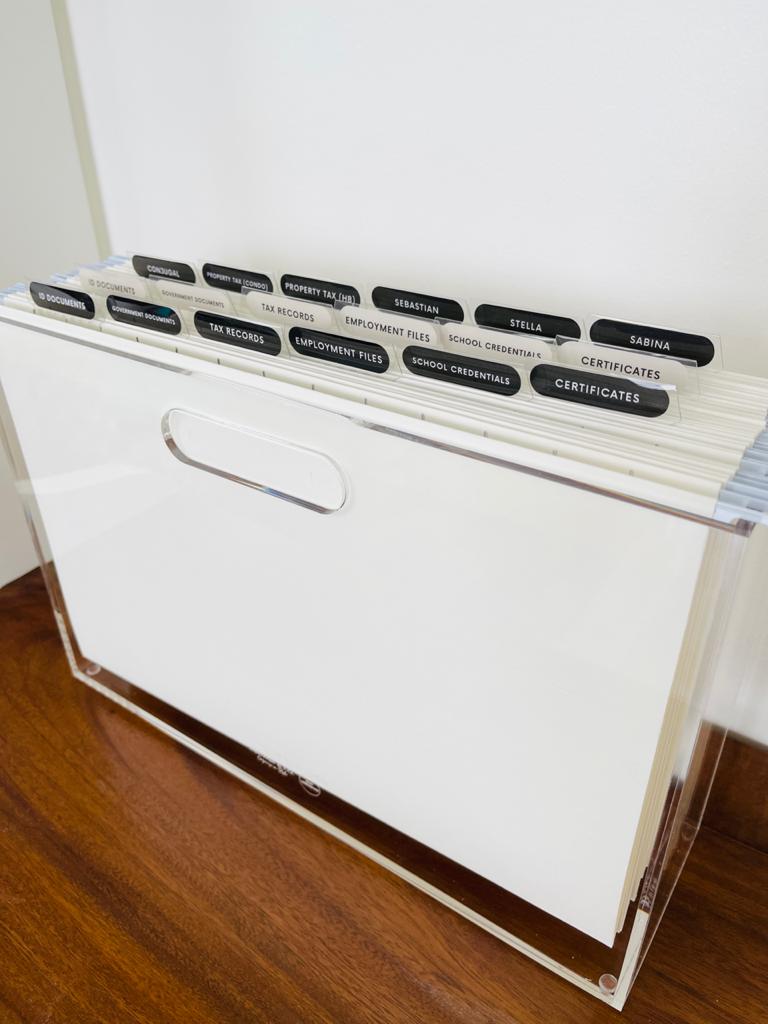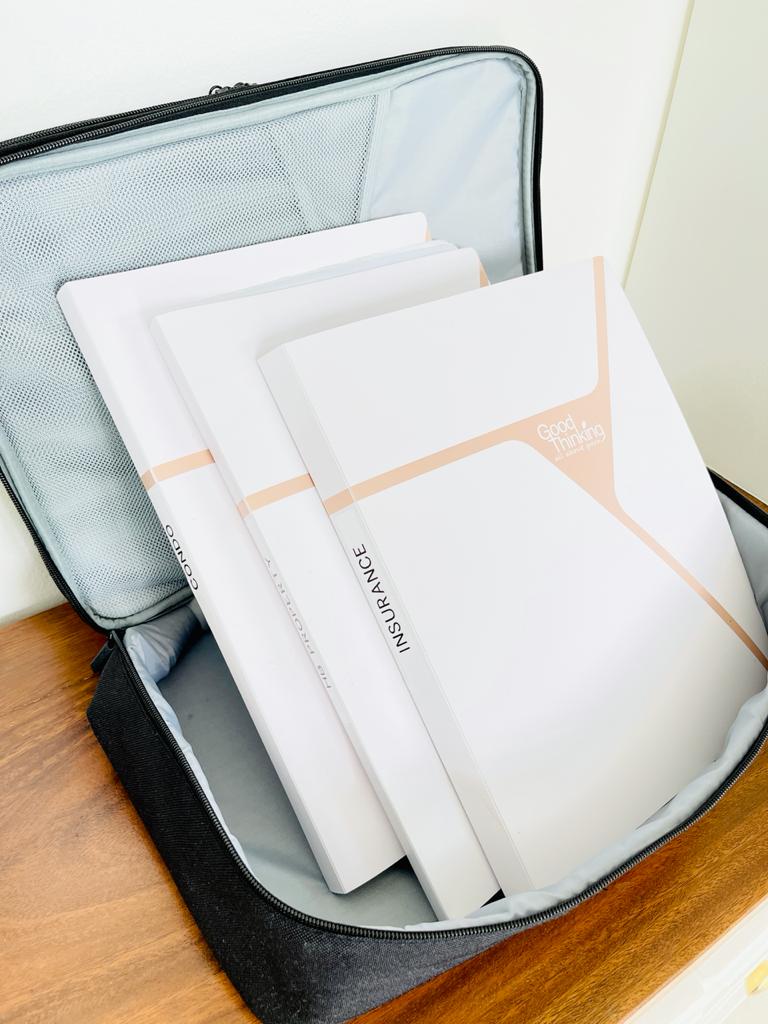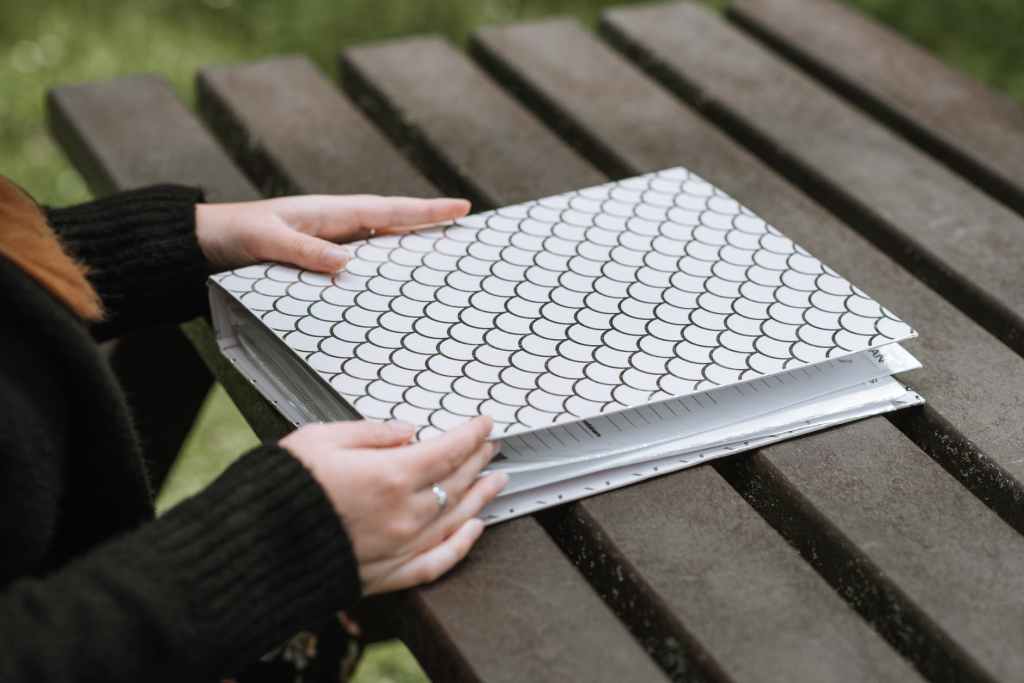I get a lot of requests for tips on organizing papers. Because really, who among us have not struggled with paper clutter? One day, there’s only one piece of paper on your desk, and before you know it, there’s already one PILE!
To address your paper concerns, I prepared a four-part blog series on organizing papers. Today, we begin with your personal documents!
Before I dive in the specifics, let me just say that tackling papers can be really overwhelming.
Unlike your clothes, shoes, bags, and other personal items that you can sort at face value, papers need more of your focus and attention because there’s no other way to organize them than to go through them one by one. After all, you don’t want to accidentally throw something you will need one day, right?
Don’t be too hard on yourself when you feel like you’re tired ten minutes into organizing papers. There is hope: that one time you spend organizing your papers is (hopefully) the only time you do it that tediously, because every periodic tackling of papers thereafter should be lighter and easier.
In dealing with personal documents, it’s important that you have a clear answer to this question first:
What season are you in right now?
A student, young professional, bride/groom-to-be, newly married, or new parent, have different needs, hence the hierarchy of importance of their personal documents differs.
SORT
Sort your personal documents according to general categories (whichever of these are applicable to your season):
- Identification Documents
- Conjugal Files
- Kids’ Files
- Property Documents
- Insurance
- Receipts
Note that these general categories should guide you in sorting your papers at the shortest possible time. Begin and end this step without feelings and overthinking.
DETACH
When your files are already in their respective categories, it’s time to go through them one by one. Get into the mindset of your life’s current season to help you in detaching from your personal documents. In detaching from your personal documents, ask yourself these questions:
- Which of these are non-negotiables?
- Which of these define my life’s current season?
- What do I need for [insert task: job application, bank account application, etc.]?
- Which of the certificates do not matter to me anymore?
- Which of these receipts have passed their return/exchange period?
Go over your personal documents periodically. If you’re not sure whether to keep or throw away documents, it’s always better to ask someone else. Sometimes, the reason why we keep holding on to something is because we don’t really understand its worth in our life. Once and for all, clear your paper clutter by really taking time to understand what you need.
| A Neat Reminder:§ Be cautious in disposing papers bearing personal information. Shred them and make sure that your full name, address, contact number, and other sensitive details such as bank account cannot be read anymore.§ Shift to digital. Digitize your documents for backup. Go for paperless options if possible, too! This is a great step in helping the environment and to minimize paper clutter in your home. |
REHOME
There are two equally important things you need to do in rehoming: establish a proper system (physical) and connect to your feeling of happiness (emotional).
In figuring out the right system for you, you need to identify your active and inactive files first. Don’t miss this important step because it will determine where your files should go.
In my active files are identification, conjugal, and kids’ files. These are the files that my husband and I need to access frequently. On the other hand, in my inactive files are our passports, insurance policies, and land title. Note that of the files I categorized as active and inactive, the inactive files bear more importance. Active files are important, too, but they can be easily replaced by request.
With these in mind, store the files accordingly:
| Kinds of Files | Storage |
| Active | Hanging Folders – for files Envelope Pouch for Receipts |
| Inactive | Clear Folders in Fire-Proof Case |
As I am writing this, I realized that it only makes sense that we choose our storage option according to what we identified as active and inactive. The structure of the hanging folders, for example, makes it appropriate for papers you regularly need, since you only have to read the label and easily pull out the document you need from the folder.
Lastly, apply the Neat Labelling in filing your papers. Your labels should be a system in itself. Color code your labels for efficiency, because this will help your household to follow and maintain the system you created.
Here are my files after rehoming:


Your feeling of happiness should come from knowing that your home has an efficient system that works for you and your household.
Stay tuned for the next installment in our series: organizing papers for business!
Stay Neat, everyone!
